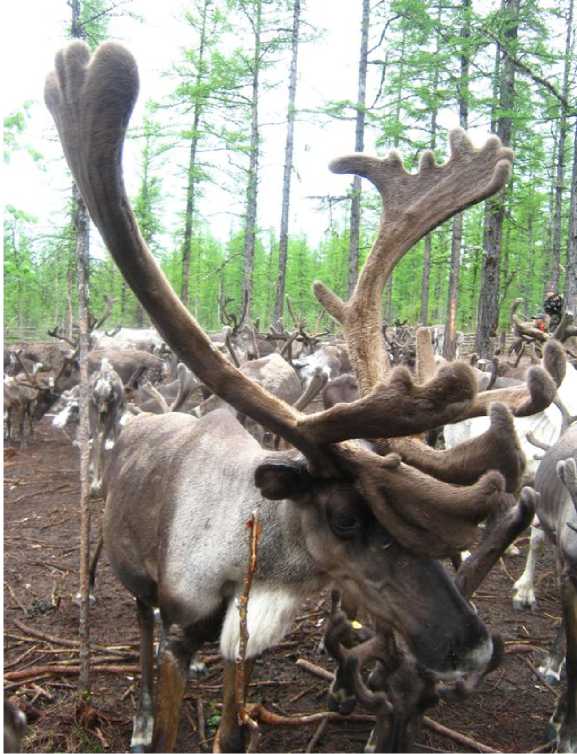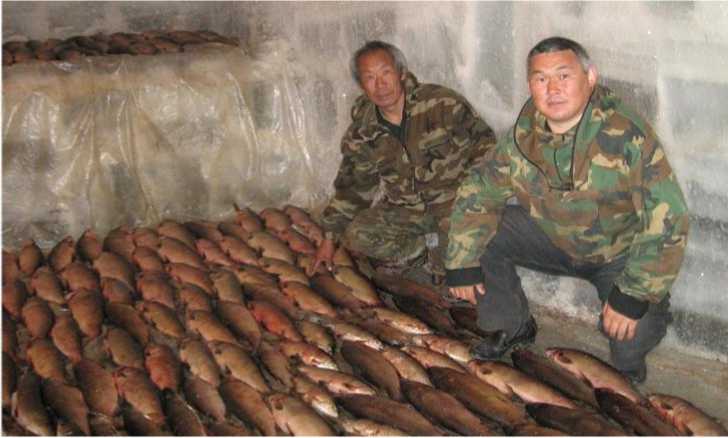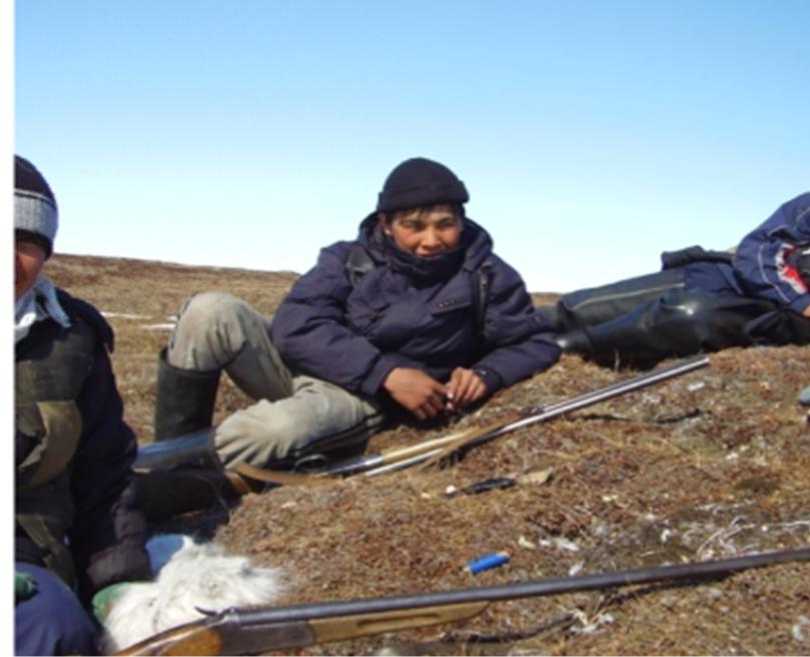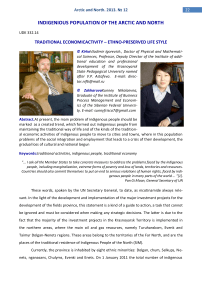Traditional economic activity – ethno-preserved life style
Автор: Kirko V.I., Zakharova K.N.
Журнал: Arctic and North @arctic-and-north
Рубрика: Indigenous people of the Arctic and North
Статья в выпуске: 12, 2013 года.
Бесплатный доступ
At present, the main problem of indigenous people should be marked as a created trend, which formed out indigenious people from maintaining the traditional way of life and of the kinds of the traditional economic activities of indigenous people to move to cities and towns, where in this population problems of the social integration and employment that leads to a crisis of their development, the gradual loss of cultural and national begun.
Traditional activities, indigenous people, traditional economy
Короткий адрес: https://sciup.org/148319907
IDR: 148319907 | УДК: 332.14
Текст научной статьи Traditional economic activity – ethno-preserved life style
"... I ask all the Member States to take concrete measures to address the problems faced by the indigenous people, including marginalization, extreme forms of poverty and loss of lands, territories and resources.
Countries should also commit themselves to put an end to serious violations of human rights, faced by indigenous people in many parts of the world ... "[1].
Pan Gi Moon, General Secretary of UN
These words, spoken by the UN Secretary General, to date, as nicotinamide always relevant. In the light of the development and implementation of the major investment projects for the development of the fields province, this statement is a kind of a guide to action, a task that cannot be ignored and must be considered when making any strategic decisions. The latter is due to the fact that the majority of the investment projects in the Krasnoyarsk Territory is implemented in the northern areas, where the main oil and gas resources, namely Turuhanskom, Evenk and Taimyr Dolgan-Nenets regions. These areas belong to the territories of the Far North, and are the places of the traditional residence of Indigenous People of the North (SIM).
Currently, the province is inhabited by eight ethnic minorities: Dolgan, chum, Selkups, Nenets, nganasans, Chulyms, Evenki and Enets. On 1 January 2011 the total number of indigenous peoples living in the Krasnoyarsk region was about 16 thousand people, including traditional types of exercise-tional economic activity of about 3 million people, including: Taimyr Dolgan-Nenets Municipal area - about 2 thousand people Evenk municipal district - about 670 people; Turuk-hansky, Yenisei, North Yeniseysky Tyukhtet areas - about 330 people. [2]
The total number of the business entities minorities accounted for about 260 households. The main types of the traditional economic activities of the indigenous people in the Krasnoyarsk Territory are: livestock, including nomadic (reindeer breeding, horse breeding), commercial hunting, processing and sale of the products of hunting, logging and non-timber forest resources for their own needs, gathering (harvesting, processing and implementation of food forest resources, collection of the medicinal plants).
Industrial development of the territories inhabited by the indigenous people of the North can not be initiated without prior discussion of the problems that may adversely affect the living conditions of the population and conservation of the indigenous people. To do this, there are several good reasons.
First, you need to take into account the interests of unique, even if small in number people for whom the North is home, the place of the residence and work. Their culture formed under the special climatic conditions, has enduring value and global importance as a model of human adaptation to extreme conditions of the North.
Second, the revision of the international standards in the relation to the indigenous people worldwide recognition of their rights (2007) have led to an increase in the political activity leaders, and indigenous movement has acquired a certain political weight and has a great influence on the activities of the legislative and executive branches.
Third, it can be stated that the processes of the formation of the market relations in the North, compared with other regions of the central and southern parts, is more painful. Territories inhabited by the indigenous people have lower rates of the socio-economic development. [3] Low life expectancy, high infant mortality, the incidence of tuberculosis and alcoholism, unemployment, suicide - this is an incomplete list of indicators, where indigenous people of the North "leaders" among other people in the country. Migration to the North due to its industrial development of the migrant population has created serious problems that previously were not - Aboriginal assimilation and acculturation.
In a particularly difficult situation were the traditional economic activities. Near the base of the traditional crafts villages undermined by numerous forest fires and for the remote fishing lack the financial means. As a result, along with a reduction in the number of the domestic reindeer from the 90s., Halfway decreased fish, furs. Stopped accepting procuring-governmental organizations mushrooms, berries, pine nuts and herbs. Because of the high cost of airline and other transport a large proportion of the products are not exported to the place of its implementation, was deteriorating. [4] This, in turn, deprives the indigenous population of motivation in the development of the traditional crafts, undermines the material basis of their existence.
Fighting nomadism, separation of the children from their families violated the age-old succession led to a crippling shortage of the staff in the traditional industries, on the one hand, and the inability of the youngest people to adapt to the modern conditions of life - on the other. Entire generations have been sidelined and are an active life. Along with all this intense commercial development without stability, and low productivity of the northern Bio systems is a major factor in the deterioration and shrinkage of the peoples of the North.
Traditional agriculture is the critical to the livelihoods of the indigenous people, is a guarantor of the preservation of their culture and traditions. This fact necessitates the preservation of the traditional activities and promotes their development. In considering this as a strategic task to consider the ever-changing conditions of the external economic and legal environment as well as to consider the strengths and weaknesses of the traditional economy.

Pic1.Domestic Northern deer (Surinda village, Evenk municipal district, 2010.)

Pic.2.Glacier Fish storage (settlement Sock, Taimyr Dolgan-Nenets Municipal District, 2011)

Pic.3. Hunting (Taimyr Dolgan-Nenets Municipal District, 2010)
The potential strengths of the traditional economy of indigenous peoples are:
-
a) deep traditional knowledge and skills of indigenous people;
-
b) the uniqueness of the traditional economy from a cultural and historical point of view;
-
c) environmental friendliness of products;
-
d) community-based organization of the economy
The weakness points are:
-
a) physical and moral deterioration of fixed assets;
-
b) the difficult financial situation;
-
c) conservatism technologies;
-
d) lack of competitiveness due to high production costs and low quality;
-
e) a narrow range of products, small volumes of production and sales;
-
f) the lack of qualified staff, poor quality management
A comparison of the strengths and weaknesses of the traditional farming shows the prevalence of the latter, which clearly reduces the chances for an independent existence without support.
The difficult financial situation of the traditional farms manifested in the lack of the working capital, lack of the access to cheap credit. This lack of the innovation and the development, ultimately, may lead them to bankruptcy liquidation. Production of the traditional economy uncompetitive in the market due to high costs of the production and sales, as well as low quality. To overcome these shortcomings can only be through the use of the improved production of the capital and modern technologies for the processing of products. In addition, the reserve for reducing costs is to optimize the transport component. Another condition for the foreign market are the quality standards and product certification. Limited range of products and services offered by the subjects of the traditional economy, it does not provide the stability, narrows the field of activity. The expansion of the production program will reduce these drawbacks, as well as to overcome the seasonality of the traditional economy. The limited volume of the production is almost insurmountable disadvantage of the traditional activities. Intensification of the traditional economic activities prevents territorial fragmentation and limited natural resources.
The lack of qualified personnel, including management, is an insoluble problem. Conditions must be created to secure the educated youth in the villages, as well as to improve the educational level of the working people.
In the legal sphere can identify a number of the contradictions, gaps and shortcomings in the legal regulation of the issues related to the rights of the indigenous peoples. These are: the multiplicity of the acts of the traditional nature of the rules, terminology inconsistency, lack of the federal legislation regulating the most important aspects of the life of these people - herding and other traditional economic activities, the right to land (territory), mineral resources [5]. In the province of the questions blank and crafts indigenous people and reindeer products are subject to the various branches of the legislation, in particular legislation on the use of the natural resources, the support of the agricultural production, taxes and fees, etc.
Due to the natural duality of the traditional economy (ethno-reserved lifestyle and the economic activities), it appears that the regulation should be carried out in a complex, centralized one subject in the context of the development of the northern territories of the Krasnoyarsk Territory.
In summary, the following trends in the framework of a package of the measures to preserve indigenous economies and to promote their development:
-
1) preservation of the habitat and management of the indigenous people, the reduction of the negative environmental impacts on the environment;
-
2) the development of the material and technical base of the traditional activities;
-
3) the establishment of the production facilities for the processing of the products of the traditional activities;
-
4) Establish a network of the procurement organizations;
-
5) development of the culture and identity of indigenous people.
The development of the production facilities for the processing of non-timber forest resources, deer meat, furs, herbs, etc., will significantly raise the economic value of the traditional activities and crafts, provide the market with sales of the traditional farms and create more jobs for the members of the indigenous minorities of the North.
As the part of the conservation of the living environment of the indigenous people and environmental improvements required to implement the following measures:
-
a) the formation of a network of protected areas and ethno-natural to preserve the ethnic groups and a more rational use of the natural resources;
-
b) the tightening of the environmental regulations in the territories of the traditional land use, environmental monitoring organization with the participation of the representatives of indigenous people;
-
c) the organization of a special regime of nature in places of the residence and traditional activities of indigenous people.
The most important task of our society is to preserve the cultures of the people of the North while the civilized use of the resources of the region for the needs of the economy. It is the combination of these two seemingly mutually exclusive directions should be at the heart of the policy, in the northern regions. In terms of the active projects for the development of the natural resources in the North of the implementation of the socio-economic development of the area should be carried out by the regional or the local authorities, in cooperation with the operators with the obligatory participation of the indigenous population.
Yet the question of how to preserve indigenous ethnic group - in the hands of the indigenous people. From their identity, activity, and promote their interests depends on what will be their future.
Список литературы Traditional economic activity – ethno-preserved life style
- Message on the occasion of the International Day of Indigenous People. 09.08.2011. URL: http://www.un.org/ru/sg/messages/2011/indigenousday2011.shtml.
- The long-term target program "Indigenous peoples of the Krasnoyarsk Territory" for 2012- 2014. Approved by the Government of the Krasnoyarsk Territory from October 13, 2011 № 591-p.
- Popodko GI Regional policy solutions to the social problems of the northern territories in the connection with oil and gas development / GI Popodko, OS Nagaeva / / Modern Study of the Social Problems (electronic scientific journal). 2010. Number three. p. 131-136. Sulyandziga RV, D. Kudryashov, Sulyandziga PV Indigenous People of the North, Siberia and Far East of the Russian Federation. Overview of the current situation. M, 2003. 142p.
- Garipov R. Sh. Topical issues of the protection of the rights of indigenous people in Russia / / Actual problems of Russian law. 2010. Number 1. p 107-116.


